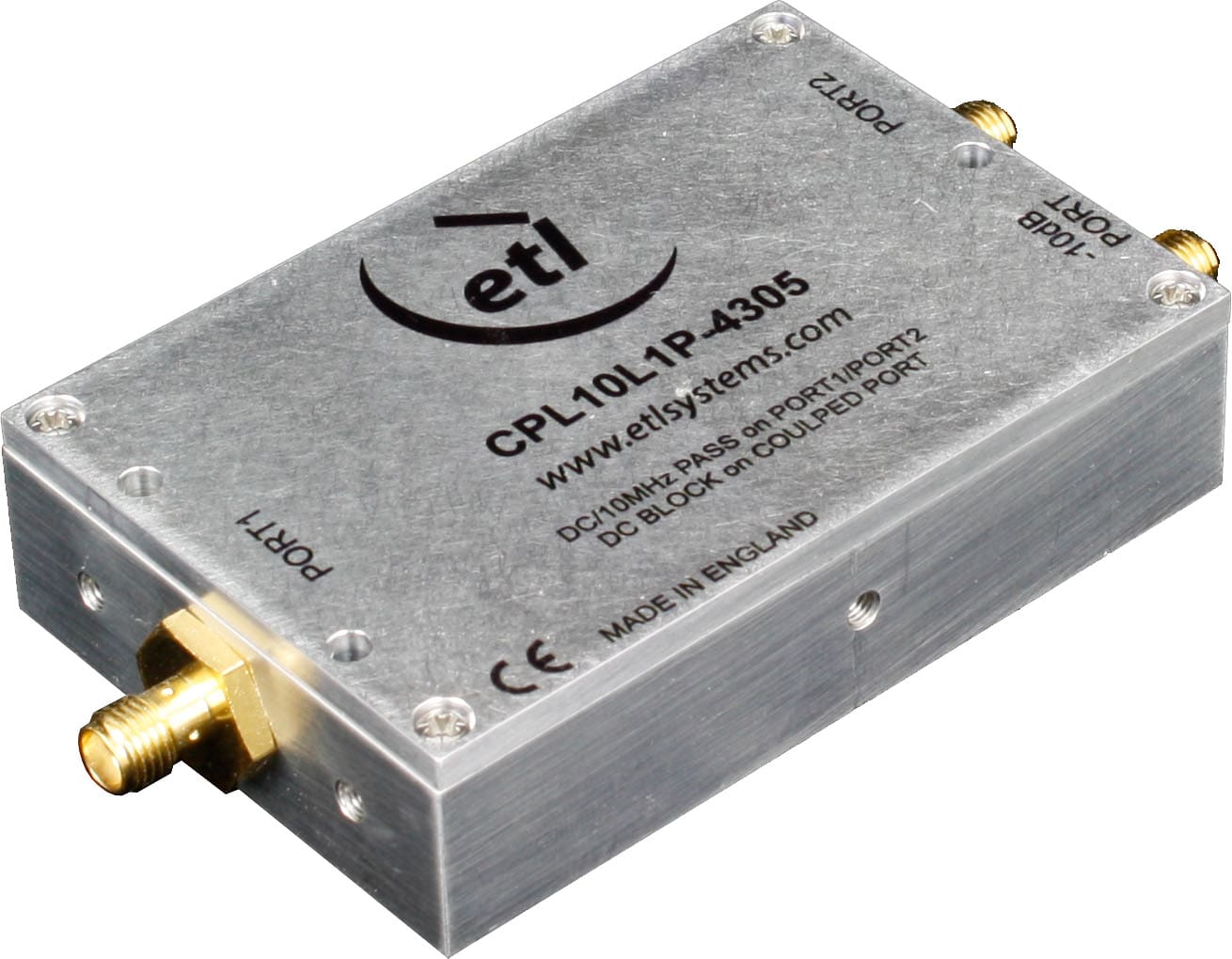
Couplers
Passive directional and proximity couplers for RF monitoring

ETL’s comprehensive range of passive directional and proximity RF couplers are designed for precise RF monitoring across frequency ranges up to 40GHz.
Register for an account or Login to see prices
Not everything is listed on our website.
If you can’t find what you’re looking for or need a custom solution, contact our team.
Product List
This area is currently under development
For specific information, datasheets or enquiries regarding this product range, please get in touch with our team on the link below.

Enhanced functionality with 10 MHz signal and DC voltage pass
A key feature of many of ETL components is the ability to pass or block a 10 MHz signal or DC voltage through the products, which can be used to power interconnecting components or pass a stable frequency reference to a LNB or BUC within the system.
ETL 4300 series offers passive 10 dB or 20 dB directional and proximity couplers for RF monitoring over L-band frequency range of 850 to 2150MHz. These devices are designed with a number of options for 10 MHz and DC pass block on the through line and/or coupled port with high current options available.

Need help selecting the right RF Component for your project?
Only a selection of our products are listed on the site. If you can’t find what you’re looking for or have specific requirements, our team is here to assist you in finding the perfect solution.

FAQ
An RF coupler is used to split or combine RF signals while maintaining signal integrity. Its primary purpose is to sample signals for monitoring purposes, allowing for effective RF monitoring and testing applications without disrupting the main signal path.
RF couplers use passive components to split RF signals without additional power requirements, ensuring minimal signal loss and accurate signal monitoring.
Types of RF couplers include directional couplers for monitoring signal strength and proximity couplers for close-proximity signal monitoring, both optimised for L-band frequencies.
RF couplers enable efficient monitoring and testing of RF signals without interrupting the main signal path, ensuring reliable performance and accurate data analysis.
Selecting the best RF coupler involves considering factors such as frequency range compatibility, coupling ratio, and application-specific requirements. Contact our experts for personalised guidance.